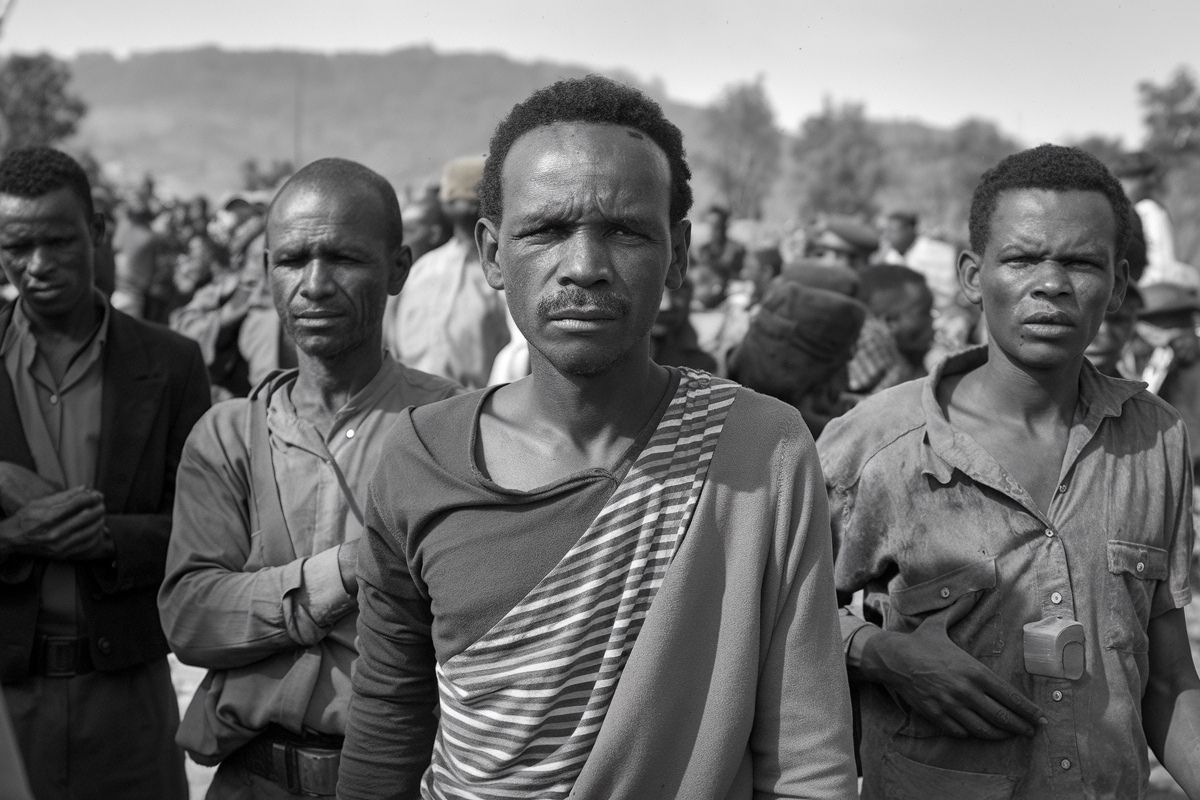
The Bale Revolt was a significant uprising in Ethiopia during the 1960s. This revolt, led by the Oromo people, aimed to challenge the oppressive feudal system and the central government's policies. Why did the Bale Revolt happen? The primary reasons included land disputes, heavy taxation, and ethnic discrimination. The Oromo people, feeling marginalized and exploited, took up arms to fight for their rights and autonomy. This revolt not only highlighted the socio-economic struggles of the Oromo but also brought attention to the broader issues of governance and inequality in Ethiopia. Understanding the Bale Revolt provides insight into the complex history of Ethiopia and the ongoing struggles for justice and equality.
Key Takeaways:
- The Bale Revolt was a major uprising in Ethiopia led by the Oromo people, who were unhappy with the government's policies on land, taxes, and conscription. It shaped the Oromo identity and inspired future resistance.
- The rebels used guerrilla tactics, while the government responded with military force and a scorched-earth policy. The revolt ended in 1970, but its impact on Ethiopian politics and the Oromo struggle continues to this day.
The Bale Revolt: An Overview
The Bale Revolt was a significant uprising in Ethiopia during the 1960s. It was a reaction to various social, economic, and political issues. Here are some intriguing facts about this historical event.
- The Bale Revolt occurred between 1963 and 1970 in the Bale Province of Ethiopia.
- The revolt was primarily led by the Oromo people, who were dissatisfied with the Ethiopian government's policies.
- The main grievances included land expropriation, heavy taxation, and forced conscription.
- The revolt was also fueled by ethnic tensions between the Oromo and the ruling Amhara elite.
- The Ethiopian government, led by Emperor Haile Selassie, responded with military force to suppress the uprising.
Key Figures in the Bale Revolt
Several individuals played crucial roles in the Bale Revolt. Their actions and leadership significantly impacted the course of the uprising.
- Waqo Gutu was one of the prominent leaders of the revolt. He was a respected Oromo leader who rallied his people against the government.
- Another key figure was Garasu Dhuki, who played a significant role in organizing the resistance.
- Many local chiefs and elders also supported the revolt, providing resources and manpower.
- The Ethiopian military leaders, such as General Mulugeta Bulli, were tasked with quelling the uprising.
- International observers and journalists documented the events, bringing global attention to the conflict.
The Impact on the Oromo People
The Bale Revolt had a profound impact on the Oromo people, shaping their identity and future struggles.
- The revolt highlighted the Oromo people's desire for autonomy and recognition within Ethiopia.
- Many Oromo villages were destroyed during the conflict, leading to significant displacement.
- The uprising fostered a sense of unity among the Oromo, strengthening their resolve for future resistance.
- The Ethiopian government's harsh response led to widespread human rights abuses, including extrajudicial killings and torture.
- The revolt inspired subsequent generations of Oromo activists and leaders.
Military Tactics and Strategies
Both the rebels and the Ethiopian government employed various tactics and strategies during the Bale Revolt.
- The Oromo rebels used guerrilla warfare tactics, taking advantage of the rugged terrain of Bale Province.
- They conducted hit-and-run attacks on government installations and convoys.
- The Ethiopian military launched several large-scale offensives to regain control of the region.
- Airstrikes and artillery bombardments were used to target rebel strongholds.
- The government also implemented a scorched-earth policy, destroying crops and livestock to deprive the rebels of resources.
The Aftermath of the Bale Revolt
The end of the Bale Revolt had lasting consequences for Ethiopia and the Oromo people.
- The revolt officially ended in 1970, but sporadic resistance continued for several years.
- The Ethiopian government implemented some reforms to address the grievances of the Oromo people.
- However, many of the underlying issues, such as land rights and ethnic discrimination, remained unresolved.
- The Bale Revolt is considered a precursor to the larger Ethiopian Civil War that erupted in the 1970s.
- The legacy of the revolt continues to influence Ethiopian politics and the Oromo struggle for rights and recognition.
Final Thoughts on Bale Revolt
The Bale Revolt stands as a significant chapter in Ethiopian history. This uprising, driven by oppression and economic hardship, showcased the resilience of the Bale people. Their fight against feudal landlords and the imperial government highlighted the deep-rooted issues within the system. The revolt not only brought attention to the plight of the peasants but also paved the way for future reforms. Understanding the Bale Revolt gives us insight into the struggles and triumphs of those who fought for justice and equality. It’s a reminder of the power of collective action and the importance of standing up against injustice. As we reflect on this historical event, let's appreciate the courage and determination of the Bale people, whose legacy continues to inspire.
Frequently Asked Questions
Was this page helpful?
Our commitment to delivering trustworthy and engaging content is at the heart of what we do. Each fact on our site is contributed by real users like you, bringing a wealth of diverse insights and information. To ensure the highest standards of accuracy and reliability, our dedicated editors meticulously review each submission. This process guarantees that the facts we share are not only fascinating but also credible. Trust in our commitment to quality and authenticity as you explore and learn with us.
